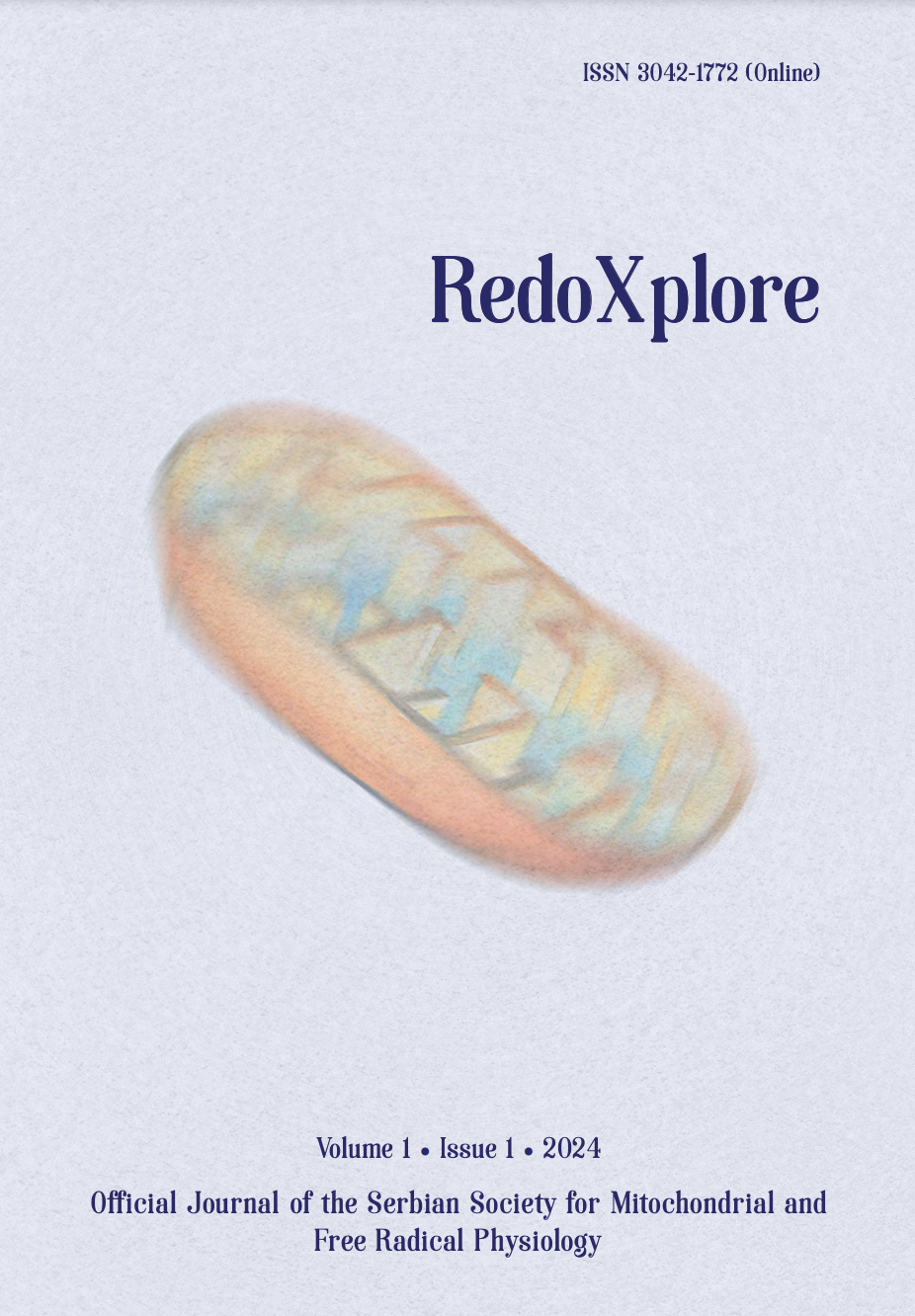
More articles from Volume 1, Issue 1, 2024
REDOX AND METABOLIC REPROGRAMMING OF BREAST CANCER CELLS AND ASSOCIATED ADIPOSE TISSUE - THE CORNERSTONES OF ADAPTIVE TUMOUR BEHAVIOUR
INSULIN MODULATES MITOCHONDRIAL STRUCTURAL AND FUNCTIONAL MOSAICISM IN BROWN ADIPOCYTES
NITRITE MITIGATES OXIDATIVE BURST IN ISCHEMIA/REPERFUSION IN BRAIN SLICES
NITRIC OXIDE, SUPEROXIDE AND PEROXYNITRITE – REDOX REGULATION OF THE CARDIOVASCULAR SYSTEM BY NITRO-OXIDATIVE STRESS AND S-NITROS(YL)ATION
DIETARY NITRATE AS PIVOT ON THE GUT MICROBIOTA-HOST REDOX COMMUNICATION
TUMOR SIZE AS THE BEST PREDICTOR FOR THE PRESENCE OF BREAST CANCER METASTASES IN AXILLARY LYMPH NODES
Department of Anatomy, Medical Faculty, University of Novi Sad , Novi Sad , Serbia
Department of Anatomy, Medical Faculty, University of Novi Sad , Novi Sad , Serbia
Department of Physiology, Institute for Biological Research “Siniša Stanković”-National Institute of Republic of Serbia, University of Belgrade , Belgrade , Serbia
Department of Physiology, Institute for Biological Research “Siniša Stanković”-National Institute of Republic of Serbia, University of Belgrade , Belgrade , Serbia
Department of Anatomy, Medical Faculty, University of Novi Sad , Novi Sad , Serbia
Department of Cell and Tissue Biology, Faculty of Biology, University of Belgrade , Belgrade , Serbia
Department of Physiology, Institute for Biological Research “Siniša Stanković”-National Institute of Republic of Serbia, University of Belgrade , Belgrade , Serbia
Editor: Bato Korac
Published: 29.08.2024.
Short oral presentations
Volume 1, Issue 1 (2024)
Abstract
The metastasis of breast cancer to the axillary lymph nodes represents a crucial aspect of disease progression and prognostic evaluation. The presence of metastases in the axillary lymph nodes is a key indicator that breast cancer is in an advanced stage, which can influence the therapeutic approach and the patient's prognosis. For this reason, we conducted a study aimed at examining the factors that contribute to the presence of metastases in lymph nodes in our female population. This research represents a prospective study conducted at the Institute of Oncology of Vojvodina in Sremska Kamenica. The study included 72 female participants diagnosed with breast cancer who underwent surgery at the Institute of Oncology of Vojvodina and had not received preoperative chemotherapy or radiation therapy. Initially, anamnestic data were collected from the participants, followed by a pathohistological analysis of the tumor tissue samples, including immunohistochemical analysis. We examined the influence of age, tumor size, activity of estrogen, progesterone, and HER2 receptors (human epidermal growth factor receptor-2) in tumors, as well as the occurrence of menarche and breastfeeding duration, on the presence of metastases in axillary lymph nodes. The results of binary logistic regression showed that the only significant predictor for the presence of metastases in axillary lymph nodes was tumor size (p=0.01, Wald=6.57, and Exp(B)=1.11), while the other examined predictors were not statistically significant (p>0.05). In our study population, the size of the breast cancer was crucial for the presence of metastases in the axillary lymph nodes.
This research was supported by the Science Fund of the Republic of Serbia, #7750238, Exploring new avenues in breast cancer research: Redox and metabolic reprogramming of cancer and associated adipose tissue - REFRAME.
Citation
Copyright

This work is licensed under a Creative Commons Attribution-NonCommercial-ShareAlike 4.0 International License.
Article metrics
The statements, opinions and data contained in the journal are solely those of the individual authors and contributors and not of the publisher and the editor(s). We stay neutral with regard to jurisdictional claims in published maps and institutional affiliations.






